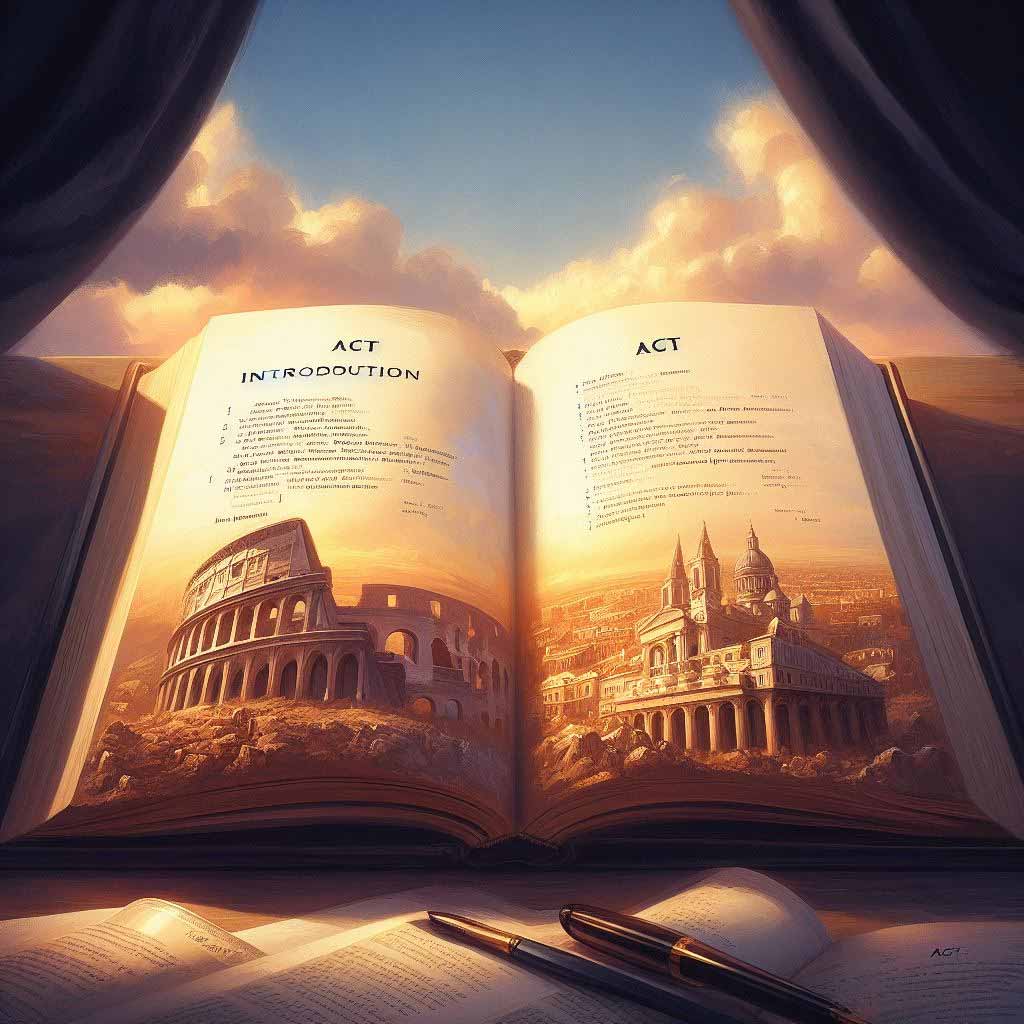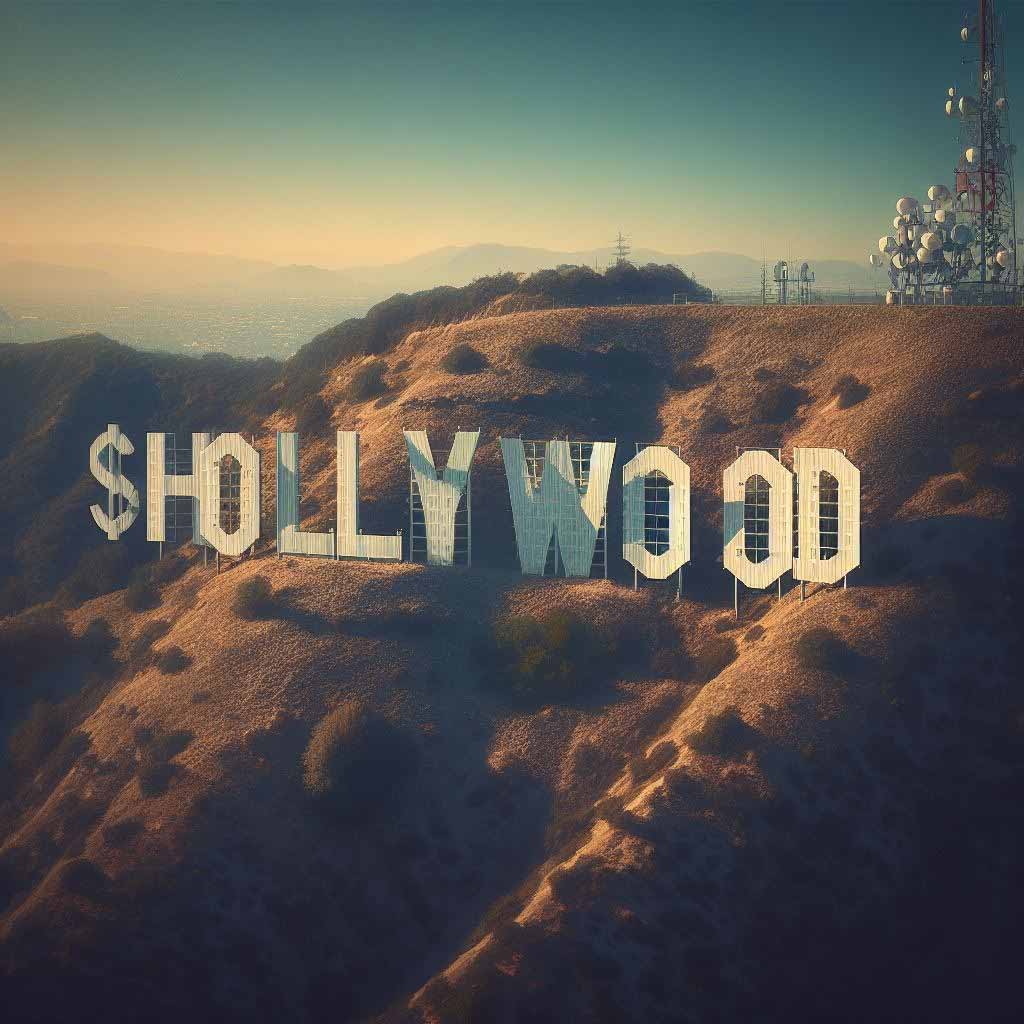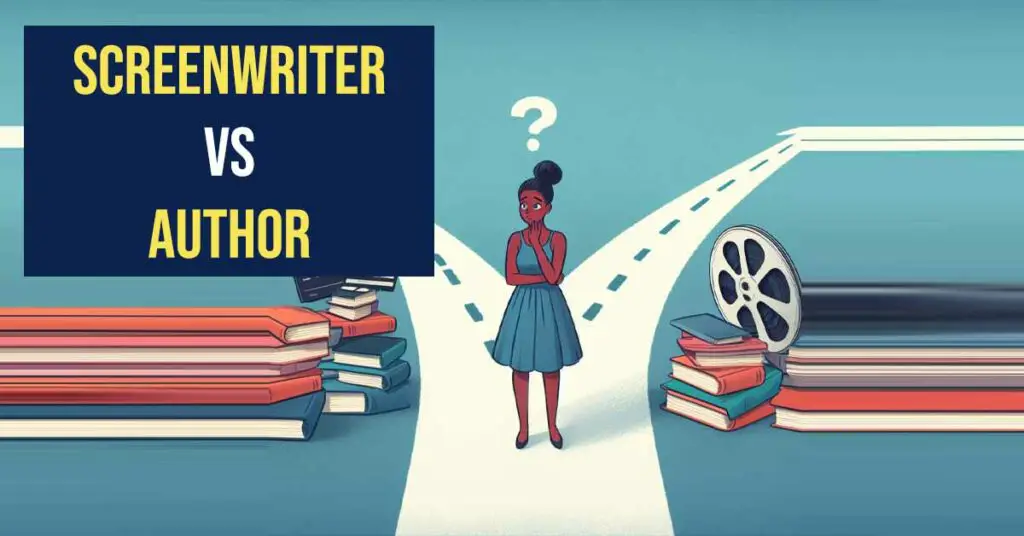Many aspiring writers dream of bringing their stories to life on the screen or page. But there are major differences between the careers of a screenwriter versus a novel author.
While both craft compelling narratives, the mediums of film and print have their own unique sets of conventions and structural formats. The path to becoming a successful scribe in Hollywood entails a very different journey than that of an author seeking a publishing deal.
This article will examine the varying storytelling styles, career trajectories, revenue models, and creative processes of screenwriters and authors. Understanding these key distinctions will help writers focus their efforts on the medium that best fits their skills and passions.
Story Structure Differences
One of the most pronounced variances between screenplays and books is the acceptable structure of the underlying narrative itself.
Screenplays generally adhere to a precise three-act format with meticulously formatted scenes. This optimized structure facilitates the visual storytelling of movies.
Books, on the other hand, allow for much more flexibility when it comes to formatting, chapter length, and overall story structure.
The Screenplay’s Rigid Three-Act Blueprint
The vast majority of Hollywood films follow a three-act structure consisting of a beginning, middle, and end. The story is broken down into roughly three 30-minute acts.
This format introduces the main characters and central conflict in Act 1. Act 2 builds intrigue, develops subplots, and escalates toward the climax. Act 3 resolves the conflict and denouement.
Within this framework, screenplays utilize scenes and sluglines to transition between locations. Scene descriptions are tight and focus on visual details to guide directors and cinematographers.
Action descriptions move the plot forward while realistic dialogue brings characters to life. The strict screenplay format serves the needs of collaborative filmmaking.

Novels Offer More Storytelling Flexibility
Novels are much more flexible when it comes to structure. While a three-act structure can optionally be used, chapters can vary greatly in length to suit the needs of the story.
Some parts are driven heavily by plot, while others focus on character development or exposition. There are no limitations on how frequently the author can transition between locations and time periods.
The standard novel format utilizes chapters and paragraphs without rigid scene delimitations. That allows for more flexibility in writing style while maintaining proper flow.
Authors exploit this flexibility to incorporate inner monologues, vivid sensory details, and prolonged descriptions of settings that would overwhelm the visual medium of film.
Books come in all lengths, structures, and pacing depending on the genre. This free-form approach empowers authors to operate outside the constructs of a standardized structure.
Writing Style Variances
Not only do script versus book formats differ, but the actual writing styles used in each medium vary greatly as well. Screenwriters often use tight, spare prose focused on actions and dialogue. Authors employ extensive description, poetics, and inner character thoughts.
Screenwriting Requires Tight, Visual Writing
Screenwriters aim to write cinematic stories that will translate smoothly to the screen. As a result, much of the description and action is written in a tight, fast-paced style that conveys visual details.
Scripts are formatted to roughly equate one page to one minute of screen time. That requires ruthless trimming of unnecessary description to keep the story moving forward. Relying heavily on dialogue and action also suits the performance-driven nature of film.

Sensory details are included but only aspects visible to the camera such as locations, costumes, props. Inner monologues are used very sparingly as voice-over narration.
Unlike novels, scripts avoid lengthy introspection, exposition, or descriptive passages that would grind a film’s pace to a halt. The goal is to paint a vivid visual storyline using sparse but strong prose.
Novels Employ Extensive Description and Language
Since novels rely solely on written words to come alive in the reader’s imagination, authors use much more expansive and poetic language.
Descriptive passages can run several pages to fully render complex characters, lush settings, and deep internal struggles. Specific details are used to establish time periods or locations.
Rather than follow the real-time progression of a film, novel authors can jump forward hours, days, or even years in a single paragraph. Chapters often start by resetting the context.
One advantage books have over film is the ability to delve deep into a character’s thoughts, emotions, and perceptions through inner monologues. This provides insight on motivations and personality.
One mark of great authors is the ability to make descriptive language flow effortlessly. Strong style, pacing variation, metaphors, and elegant phrasing all contribute to memorable stories.
Revenue Models
A key point of divergence between screenwriting and novel writing careers is how the scribes make money from their creative efforts.
Screenwriters typically receive upfront payments for their scripts and subsequent residuals if a film gets made and achieves financial success. The studios retain most of the long-term rights.
Book authors earn royalties based on sales and circulation of their work. While paid less upfront, authors typically retain more creative control and ownership over their intellectual property.
Selling Spec Scripts vs. Book Advances
Aspiring screenwriters perfect their craft by writing “spec scripts” – sample screenplays used as writing samples when pitching ideas to studios, agents, or producers. Spec scripts are written on speculation, with no guarantee of being sold or produced.
When a spec script is purchased, the writer gets paid an initial lump sum amount negotiated via their agent. This may range from a few thousand for low-budget films up to a few million for franchises by top screenwriters.
The studio then owns the rights and can hire new writers to tweak the script. The original screenwriter has little control over the final film.
Book authors typically seek publishing deals by pitching book proposals, which include an overview of the plot, character sketches, and sample chapters. If accepted, the publisher pays an advance based on projected sales.
The advance may only be a portion of the expected royalties. But crucially, the author retains creative control over their manuscript and copyright. Compared to scripts, books have longer shelf lives that allow royalties to accumulate over the years.

Residuals vs. Royalties on Ongoing Sales
Another key financial difference lies in how screenwriters and authors continue benefiting from successful projects over time. Film residuals provide intermittent payments, while book royalties are earned continuously.
Once a movie is released theatrically, the screenwriter earns residual payments triggered when the film reaches certain box office milestones or receives distribution via streaming, cable TV, DVD sales, etc.
These residuals serve as a profit-sharing mechanism acknowledging the writer’s creative contribution. But they are still controlled by the studio owning the rights. The amounts diminish over a few years as distribution channels age.
Book authors earn royalty payments whenever their books are sold or circulated. There is no limit to the earning potential over the lifetime of the published work. Popular books can keep generating royalties for many years.
While slower to accumulate, royalties give authors an ongoing financial stake in the success of their creative work. In most cases, the author retains copyright ownership of their intellectual property.
Career Paths
The roadmap to establishing a career as a screenwriter versus an author also contains key divergences based on the nature of each industry.
Becoming a working screenwriter revolves around landing agent representation, networking in Hollywood, and selling specs to studios. It’s an uphill battle full of rejection.
Authors work within the publishing industry by pitching book proposals, finding publishing partners, and building their fanbase. Self-publishing is also an option.
Navigating Hollywood vs. Publishing
To make it as a Hollywood screenwriter, most writers need to become an L.A. local in order to schedule pitch meetings, connect with producers, and land a high-quality agent. Attending mixers and conferences to network is also essential.
After putting together a portfolio of polished spec scripts, the goal is to attract agent representation and get scripts optioned by production companies. A spec needs to not only showcase writing ability but also tantalize producers with commercial potential.
The harsh reality is most spec scripts — even for established screenwriters — never actually get produced. Patience and persistence against constant rejection are vital. A single sold script can launch a lucrative career though.
Book authors typically work through publishing houses or self-publish their work. Building an author platform and fanbase through social media, conferences, and email lists is crucial to establish credibility.
Submitting polished proposals with sample chapters is the pathway to securing a publishing deal. If a house accepts a manuscript, the editing and publishing process provides vital feedback.
Unlike screenwriters, authors have fuller control over their final published work. But marketing efforts still help determine sales success.
Paths to Success Hinge on Perseverance
The paths for screenwriters and authors to finally achieve career success share some similarities — honing craft, tirelessly networking, persevering against rejection, and earning attention for quality work.
But the cycles and power dynamics differ. Once a film is made, the screenwriter cedes control and earns residuals. Authors retain control through publication and collect continuous royalties.
Collaborative Medium vs. Solo Work
Filmmaking is an inherently collaborative process involving the creative contributions of producers, directors, actors, and editors during production. The final movie ultimately reflects these multiple visions.
Books function as much more independent creative works, with the author wielding greater influence over the final published product and its success.
Ceding Creative Control in Filmmaking
Even though the screenwriter originates the narrative blueprint, their creative vision is filtered through many additional parties in the process of bringing the script to screen.
After a screenplay is optioned or sold, it often gets rewritten or “polished” by other writers hired by the producers to adjust characters, punch up dialogue, or sharpen plot points. The final shooting script may deviate from the original.
During filming, directors have discretion to modify scenes or dialogue in collaboration with actors and cinematographers to best translate the script to screen. The movie that ends up in theaters reflects this collective creative process.
The original screenwriter is typically not involved in the filming or editing stages when the movie is fully shaped. By selling their script, the screenwriter cedes creative control to the producers and director. This collaborative process is simply the nature of filmmaking.
Authors Retain Creative Control
The book publishing process certainly involves collaboration and compromise, especially when working with major publishing houses. Editors provide input on early drafts and may require rewrites.
But during the editing process, authors remain the primary creative decision-makers regarding characters, plot, language, and themes. No changes happen without their approval.

Publishers handle layout, cover design, and marketing. But the author retains full control over the final manuscript content, unlike a script that gets filtered through many additional parties.
The solo nature of writing also allows authors to retain copyright ownership over their work. This gives them more influence regarding derivative works like movies based on their books.
Conclusion: Screenwriter vs Author – Two Creative Paths, One Storytelling Passion
While screenwriting and book writing demand distinct skills tailored to different mediums, they both provide amazing creative outlets for writers to share their stories with the world.
Both careers also require tireless commitment and perseverance through constant waves of rejection. But a single sold script or published manuscript can transform a writer’s career.
For writers who crave structure and visual storytelling, screenwriting’s strict formatting and cinematic style drive engaging film narratives. Just be prepared to relinquish some creative control.
Book authors have more independence over their finished work and earning potential, but must employ extensive description and language skills to transport readers into imagined worlds.
At their core, screenwriters and authors share a passion for storytelling and connecting with audiences. Whether on page, stage or screen, compelling narratives have the power to delight, challenge, and inspire.
Frequently Asked Questions
Can an author become a screenwriter?
Yes, many authors leverage their writing skills to become screenwriters. It requires learning the specific script formatting and tight, visual writing style. But strong storytelling ability transfers between books and films.
What is the difference between a screenwriter and a writer?
A screenwriter specifically writes scripts for film and TV. A writer is a more general term for any author of written work including books, articles, scripts, poems, etc. All screenwriters are writers, but not all writers are screenwriters.
Do screenwriters write the story?
Yes, the screenwriter initially creates the film’s story, characters, dialogue, and overall narrative structure in the script. But the final story also reflects input from directors, actors, editors, etc. during production.
Are TV writers called screenwriters?
The terms are mostly interchangeable. Writers of television episodes or series use the same script format as screenwriters. Often the term “scriptwriter” or “teleplay writer” is used. But they utilize similar skills.
Do screenwriters make money?
Income for screenwriters varies widely. Those selling scripts or working on productions can earn six figures. But many unproduced writers earn little until they sell their first script. Residuals and royalties provide ongoing income once films or shows are released.
Do screenwriters sell their scripts?
Yes, selling spec scripts (written on speculation) is one key pathway for screenwriters to make money. Original scripts or adaptations can sell for thousands to millions. But there is stiff competition and most specs do not sell.
Is it harder to write a book or screenplay?
Both have challenges. Screenplays require tight, visual writing condensing a full story into about 100 pages. Books allow more detail but require greater writing volume and depth. Books also give authors more creative control during production.
Is being a screenwriter worth it?
It provides a challenging but potentially lucrative writing career for those passionate about film and TV. Writing scripts requires patience through constant rejection. But a single sold script can launch a career. Passion for the craft determines if the hardship is “worth it.”
Do you need a degree in screenwriting?
No specific degree is required. Writing talent, dedication to learning the craft, and successfully selling scripts are more important than formal screenwriting education. But classes can provide helpful training.


